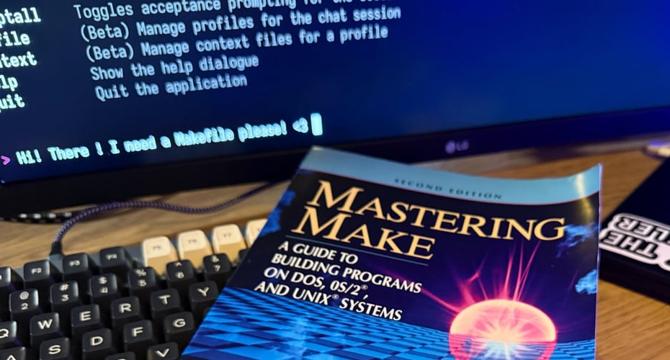Dev
1M
126

Image Credit: Dev
Making Makefiles for fun and profit
- Make is a 48-year-old build automation tool that remains useful today, and this article highlights its benefits, usage, and practical examples for modern development workflows such as Terraform automation and local dev environments.
- Makefiles help in automating tasks efficiently by compiling only changed source code files and managing dependencies to streamline the build process.
- The article delves into the cryptic syntax of Makefiles, explaining variables, targets, linking object files, and compiling source files through practical examples like a C project Makefile.
- Common uses of Makefiles beyond C software development include Terraform automation and setting up local development environments for projects like Rust using Docker.
- Makefiles can be instrumental in managing various development projects, as shown through examples of a link shortener CDK project and a static website deployed using AWS Amplify.
- Amazon Q Developer CLI is introduced as a tool to generate Makefiles for projects, demonstrating how it can automate tasks like building, deploying, and setting up local environments.
- The article emphasizes the enduring relevance of Make despite its complex syntax, showcasing its evolution over 48 years to optimize development workflows and simplify automation tasks.
- Dynamic Makefiles are showcased through examples where variables like Amplify app-id are fetched dynamically to handle deployments and updates effectively.
- Overall, Makefiles remain a valuable tool for developers, aiding in automating tasks, standardizing workflows, and enhancing productivity across various development scenarios.
Read Full Article
7 Likes
For uninterrupted reading, download the app